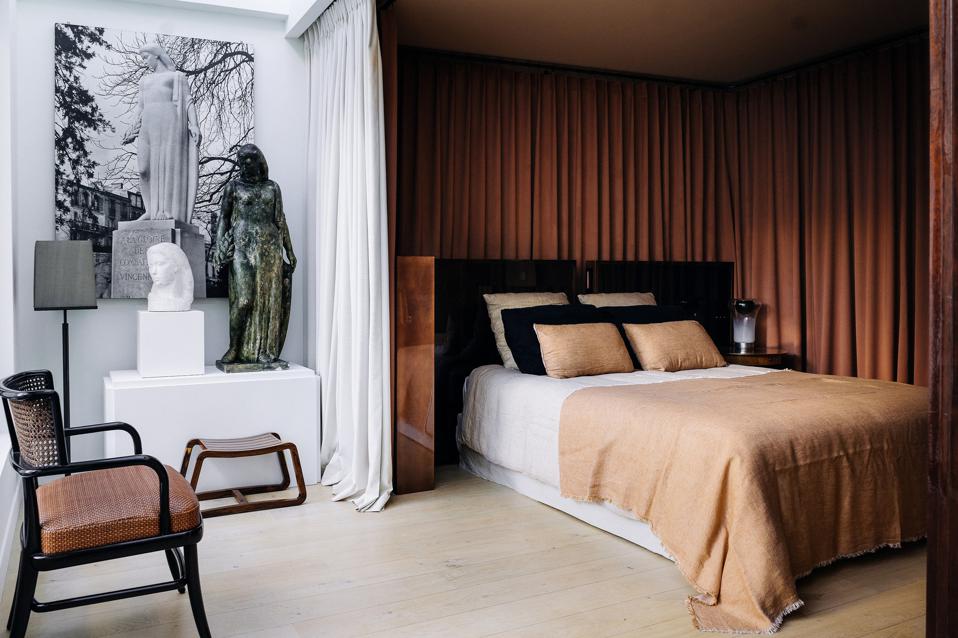Paris-based interior designer Tristan Auer embodies the elegance of French high-end design throughout the world, like an ambassador of the French art of living. He discusses his design process and the projects that have contributed to his success.
You were born in northeastern France in 1970. How did you realize you wanted to build things and get into design?
My grandfather was a landscape designer living in a beautiful mansion from 1920. That was certainly the start of my sensitivity to nice interiors and beautiful proportions. I was raised in Aix-en-Provence, which is a great place for inspiration, and when I had to decide what to study, I thought that working full-time was better when you enjoy it.
Describe your experience of working for Christian Liaigre from 1996 to 1998, then Philippe Starck from 1998 to 2002. What did you learn from them?
I learned a lot in different aspects. It was the best school ever. Two different styles and scales. Liaigre is more on the millimetric scale: attention to detail and furniture. Starck is more scenographic, what people describe today as the “wow” effect.
You founded your own design studio in 2002. What was your path to success like?
Bryan Adams, the singer, gave me my first strong project and launched me. He was so kind to introduce me to his famous friends. I owe him a lot. He became somebody important for me and a good friend.
How would you describe yourself as a designer?
I am not specialized in anything. I start every project with a fresh vision, forgetting what I have done before. I am always open to every creative stimulation coming from different, unpredictable ways.
What criteria do you use to decide which projects to accept?
Mutual respect with the client. I cannot work for people I do not consider.
Describe your creative process from the time a client commissions you to the final design.
I start to listen my client first. As I am designing for him or her, I need to understand what he or she needs before everything, then I create for him or her, as a tailor would do, a bespoke project. Furniture comes from different sources: galleries, made to measure or auctions.
How do you help your clients discover their personal design esthetic and transform their vision into reality while incorporating your own style?
I consider myself to be a tailor, designing for clients 100 % made to measure. Discussion and mutual trust are the keys to working together.
What is the hardest thing in design for you?
To design my personal home.
Tell me about your studio, how big your team is, how many projects you work on at any one time and what keeps you going.
I have a studio with 20 people only to keep them close to me and act very fast. They are like a Formula 1 team, very efficient. Most of them have been with us for a long time. They’re more a community or a family.
Which of your designs from throughout your career best reflect who you are as a designer?
The most impressive is Hôtel de Crillon for sure, the most refined and bespoke. Hôtel Les Bains has a very rock attitude, Bryan Adams’ house in Mustique is the most in phase with the environment and nature, my project for Cartier has a very modern approach and is respectful of the brand’s DNA, the last car I did with my Car Tailoring brand which is a Citroen CX 1975, Hôtel Sinner in Paris is my little baby and all the others I cannot mention that will stay secret forever.
Tell me about some of the design projects you’re currently working on or have recently completed.
I continue developing furniture with Poltrona Frau, Pouenat, Holly Hunt. I’m working on hotels, residences, yachts, restaurants, jets, vintage cars and my countryside house. I never know what will be my next 30 minutes, so the future is pretty abstract for me. I am pleased to follow my destiny.

